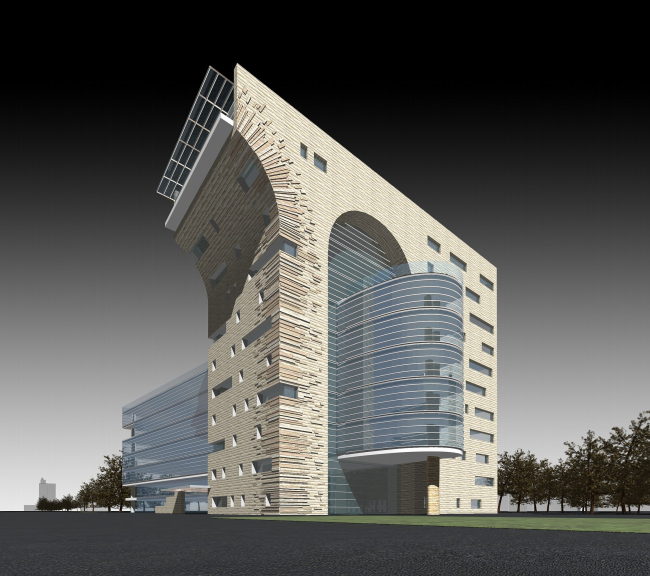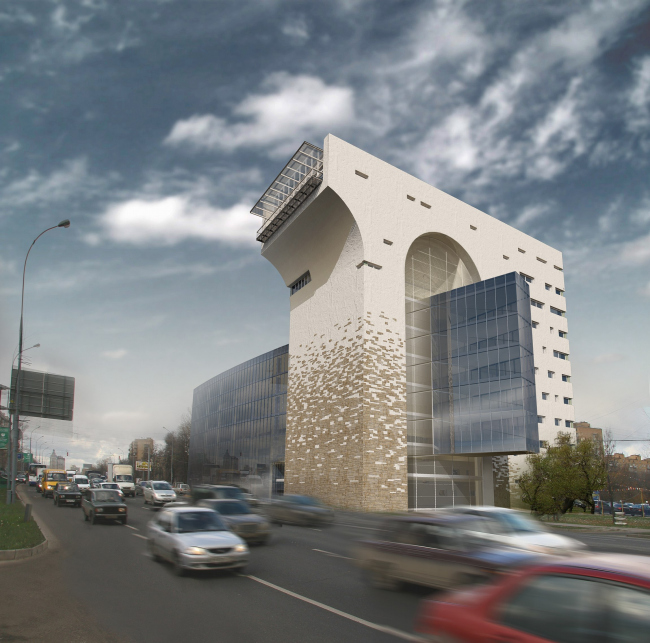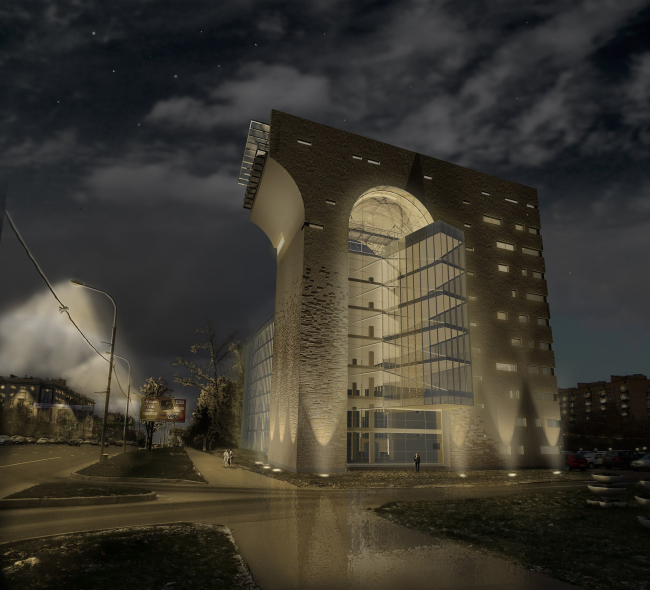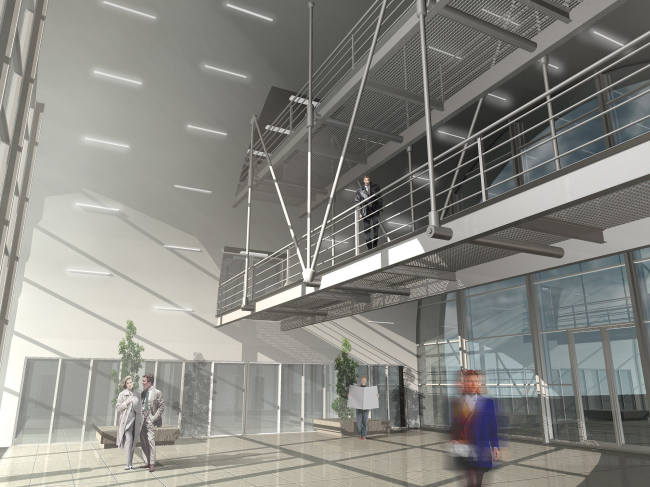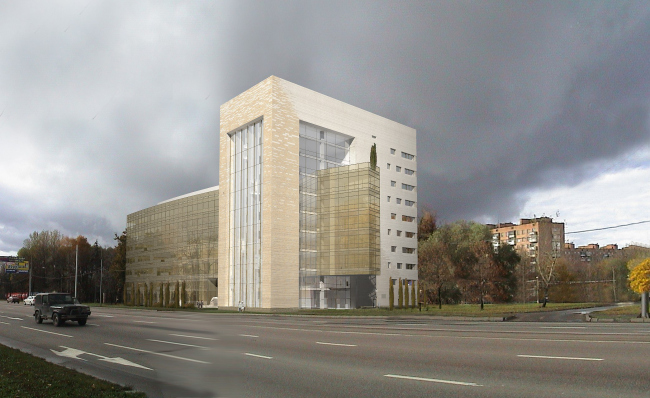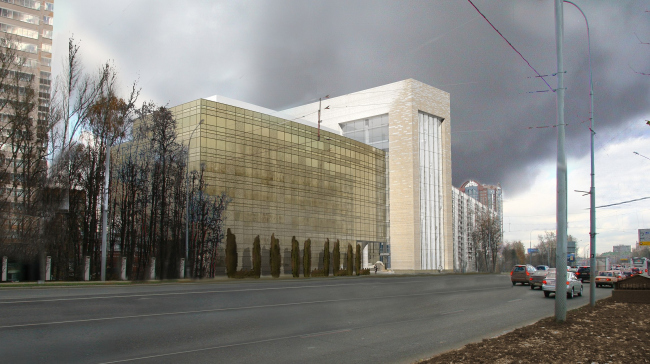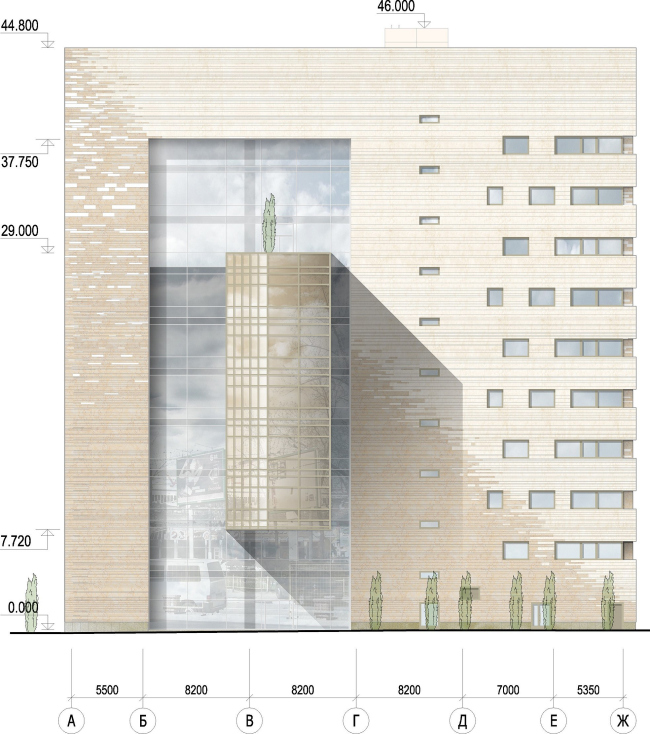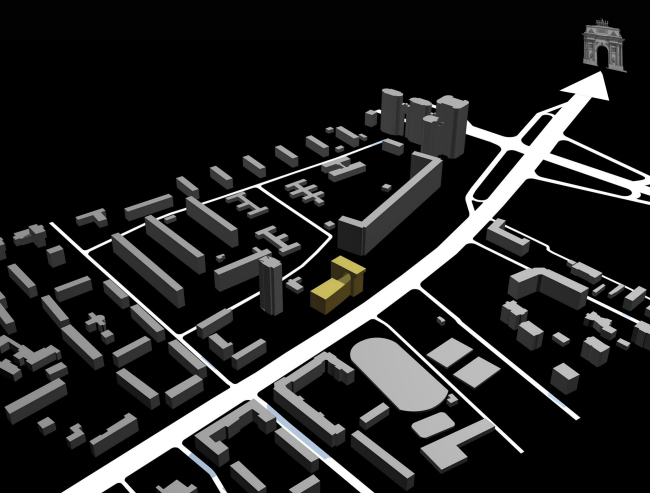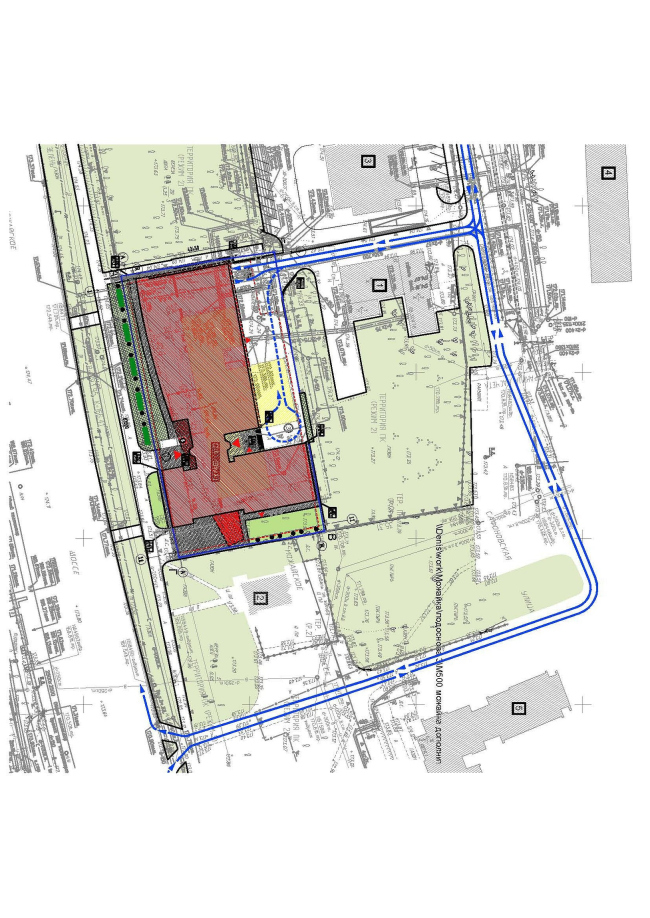|
Published on Archi.ru (https://archi.ru) |
|
| 05.10.2010 | |
|
Ice Age |
|
|
Julia Tarabarina |
|
| Studio: | |
| Bavykin architects | |
|
The final chapter in the story of the house-arch project on Mozhaiskoe highway, where it is no longer an arch. A few words about the project. The office centre was designed in 2006. The giant, 11-storey arch seemed to be a projection of Triumphal arch by Bove and memory of Roman aqueducts ruins, which are similarly interlace into the construction. Glass nose, cutting into is gap, was like a locomotive rushing out of the tunnel, the arch was like wall on the way of “locomotive of modern age”, ruins of the city wall are run through and consequently half ruined. A popular theme but the house-arch became one of the most concise and exact architectural implementations. The arch on Mozhaiskoe highway made people think, talk, write and discuss what is quite rare. No wonder the house-arch was noticed by critics, other architects, there was a number of articles, and in autumn of 2008 the project was included in the exposition of Russian Pavilion for the Venice Biennale. Then there happened the following. For a while the project had been developing, we even described its second version. But the creative research was stopped and there began the story as such. In October 2008 (model of the house-arch was on display in Venice) at the Social Council the Mayor expressed his dissatisfaction with the project, saying the building “looks unfinished”, Yuri Roslyak and Yuri Grigoriev spoke against the “deliberately ruined look" of the building. It was recommended to redo the project and get rid of the arch. Right after there appeared the article by Kirill Ass, the architect and critic on OpenSpace who quite harshly criticized the project for "simplification of the architectural ideology" and offered "to find a more exact and complex idea”; according to him the mayor did not like “simplicity of the building”. At the risk of being deemed a simpleton, yet I notice that accordingly everyone who wrote about the project split into two obvious lines: historians and art historians liked idea of the project but the only architected who wrote about it took asunder the idea. By the way, I note that consequently there was started a discussion in the press media. A discussion about architectural projects – not a scandal, like one around the Mariinsky or Ohta-center, but reasoning not alien to opinions on the artistic concept – happen so rarely in our post-Soviet time, that this fact itself makes the project by Bavykin rather outstanding than ordinary. NoneNoneNoneNoneNoneNoneNoneNoneNoneNoneNoneNoneNoneNoneNoneNone |
|

